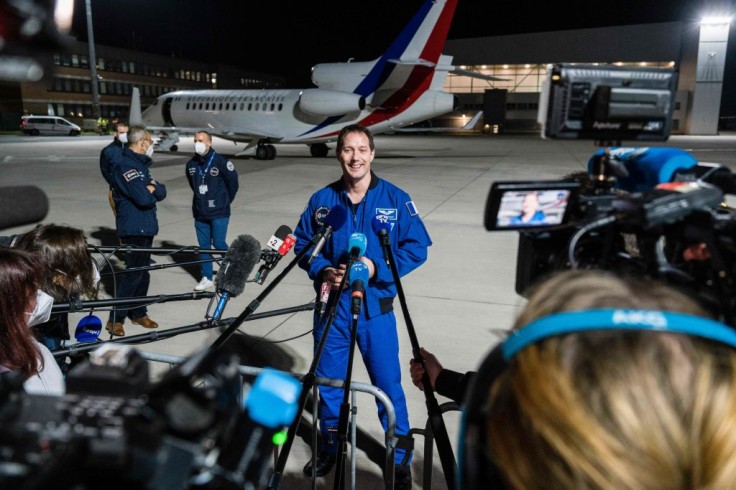
Matthias Maurer, an astronaut with the European Space Agency (ESA), took stunning photos of the planet recently from a height of 250 kilometers.
The images taken resemble paintings rather than the natural Earth settings.
These two photos of Earth were taken from the International Space Station (ISS).
In a tweet that accompanied the photos, Maurer, the astronaut, stated that he captured these bright pictures of the Arabian Peninsula, but he's also curious about these shapes and lines in the desert.
Seen from above, our Earth looks like a true work of art 🎨🖌️ I took these colourful pictures of the Arabian Peninsula, but I also wonder what these shapes and lines in the desert are 🤔 #EarthObservation #CosmicKiss pic.twitter.com/MwOwKxUXUg
— Matthias Maurer (@astro_matthias) January 30, 2022
ESA Astronaut Capturing ad-Dahna Desert
With the curiosity left on the post, several individuals quickly responded, which is supported by a quick check at the location on Google Earth, that the dark line running across the top image looks to depict the Saudi Arabia-Kuwait border zone.
Furthermore, as reported by Digital Trends, the noticeable striking rusty reds in the second photo appear to be located around 200 miles north of the capital, Riyadh, the ad-Dahna desert near Buraydah in Saudi Arabia.
The constant shifting environment provides plenty of fantastic photo opportunities for astronauts to take advantage of during their downtime, with the space station orbiting Earth every 90 minutes or so.
The Cupola, the orbiting outpost's seven-window module that provides panoramic vistas of our planet and beyond, is where most of the Earth's images are taken.
Read Also: NASA Space Tourism Launch Delayed; Axiom Space to Build Studio in Orbit for Tom Cruise Movie
The Copula
It is reported that the Cupola, a seven window observatory module with panoramic views of Earth and space, is perhaps the most recognized element of the International Space Station (ISS).
The International Space Station astronauts usually enjoy spending their spare time there, looking dreamily out the windows and taking images of our planet's splendor.
The Cupola, however, is much more than a place for astronauts to unwind during their downtime.
It also serves as a workstation for operating the facility's robotic arm for spacewalks and spacecraft operations, making it ideal for Earth observation research.
The seven window module weighs around 1.8 tons, measures 3 meters in diameter and 1.5 meters in height.
It was manufactured by the ESA and deployed on the ISS during a Space Shuttle Endeavour mission in 2010, a decade after it was launched.
Capturing Earth Using NASA
Matthias Maurer, a current ISS occupant, shared further information about how astronauts observe Earth in a tweet this week, including the name of the mobile app that helps them locate points of interest.
Maurer, who arrived at the ISS in November, stated in a tweet that the space station astronauts utilize an app called GoISSwatch & NASA's 'World Map' software to find out where we are above Earth and not miss any great photo chances.
Where on Earth...? 🤔 To find out where we are above Earth & not miss any interesting photo opportunities, @Space_Station astronauts use an app called GoISSwatch & @NASA's "World Map" programme. These also show weather conditions & Earth observation targets for the perfect 📸 pic.twitter.com/vOvUj1iGGa
— Matthias Maurer (@astro_matthias) January 13, 2022
These also reveal weather conditions and Earth observation targets.
Digital Trends reported that the GoISSWatch app (free for iPhone and iPad) was created by GoSoftWorks and shows astronauts the space station's expected route as it orbits Earth.
The same iOS app (Android users can try this one) provides real-time time tracking of the ISS for those looking up.
The app gives enthusiasts the opportunity to see the orbital satellite for themselves and informs them when the station will pass in their area.
GoSatWatch as a fee of $10, and is a commercial edition of GoSoftWork's program that allows you to follow not just the ISS but also a slew of other spacecraft orbiting the Earth.
Users of the application also have the feature to observe SpaceX spacecraft on their way to and from the International Space Station.
If space enthusiasts are merely interested in detecting the space station, GoSoftWork's free software will suffice.









